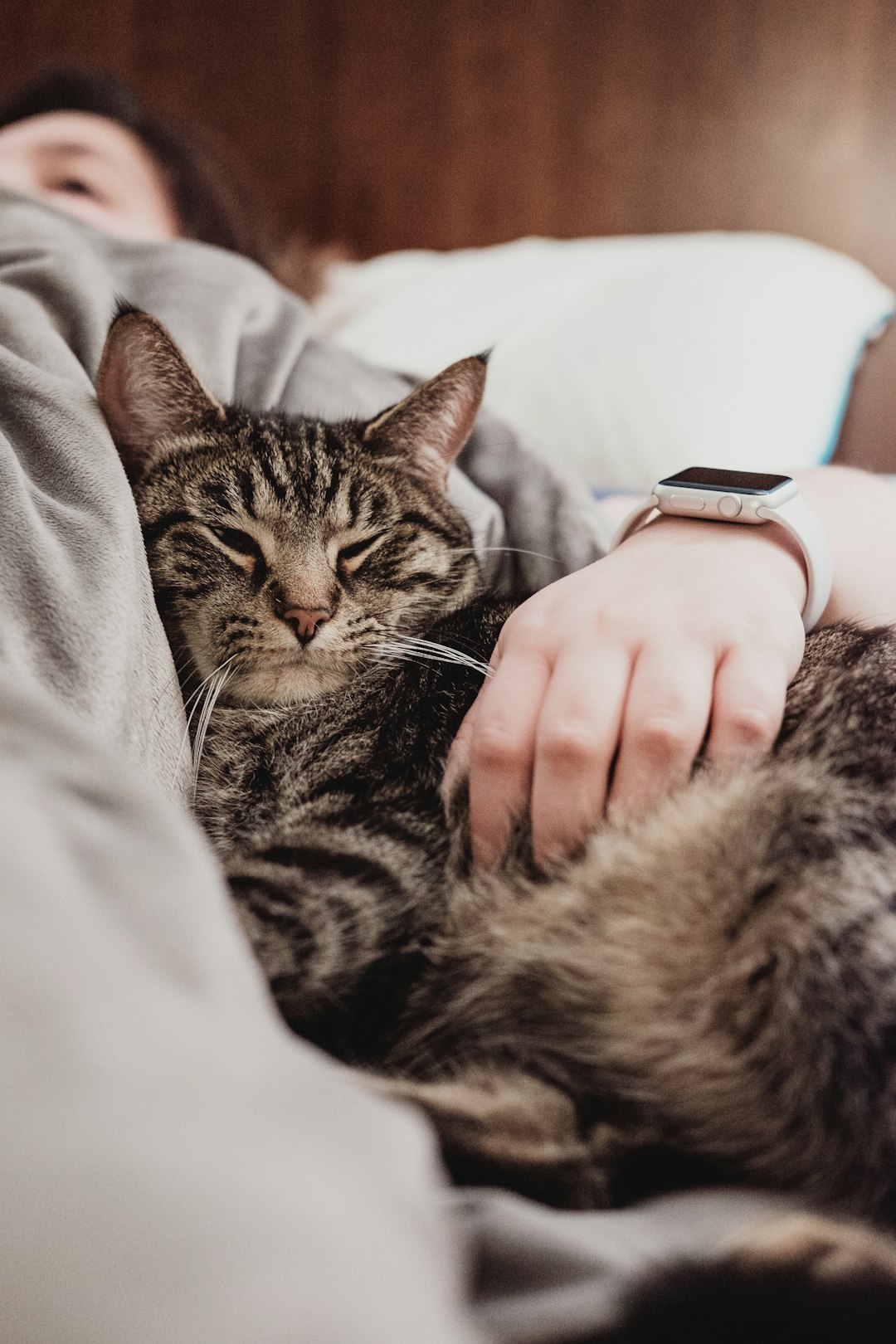Tapeworms in cats can pose significant health risks, affecting not only our feline friends but also potentially humans. These parasitic worms often go unnoticed until symptoms arise, making it crucial for cat owners to stay vigilant. Understanding the signs and knowing how to effectively diagnose and treat these infestations can lead to a healthier life for your pet. Additionally, adopting preventive measures will help protect your cat from future infections and ensure their well-being. In this guide, we’ll explore everything you need to know about tapeworms in cats, including their lifecycle and associated risks.
Understanding Tapeworms in Cats
Tapeworms in cats are flat, segmented parasites that can affect your feline’s health. These parasites typically reside in the intestines and attach themselves to the intestinal lining using their hooks and suckers. Here are some crucial points about tapeworms in cats:
Types of Tapeworms: The most common types affecting cats are Dipylidium caninum and Taenia taeniaeformis. Both types produce distinctive egg packets that can often be seen in the cat’s feces.
How Infection Occurs: Cats usually contract tapeworms through ingesting infected fleas, rodents, or contaminated food. Thus, managing your cat’s flea control is essential.
Lifecycle: The lifecycle of tapeworms involves two hosts—an intermediate host (such as a flea or rodent) and the definitive host (the cat). Once consumed, the tapeworm matures in the cat’s intestines.
Understanding tapeworms in cats is critical for prevention and timely treatment. Be vigilant about symptoms and consult your veterinarian if you suspect an infestation. By doing so, you can help ensure your cat remains healthy and happy.

Common Symptoms of Tapeworm Infestation
Recognizing the common symptoms of tapeworms in cats is crucial for early intervention. Here are some signs to look out for:
- Weight Loss: Despite an increased appetite, your cat may lose weight due to nutrient absorption issues.
- Visible Segments: You may notice small, rice-like segments of the tapeworm around your cat’s anus or in its feces.
- Itching: Excessive scratching near the tail can indicate irritation caused by tapeworm segments.
- Hair Loss: Some cats may exhibit patchy fur loss, often associated with persistent scratching.
- Lethargy: Affected cats may show reduced energy levels and enthusiasm for play.
| Symptom | Description |
|---|---|
| Weight Loss | Noticeable despite eating more |
| Visible Segments | Small white or beige pieces in feces |
| Itching | Frequent scratching around the tail |
| Hair Loss | Areas of missing fur due to scratching |
| Lethargy | Decreased energy levels |
If you observe any of these symptoms, consult your veterinarian promptly to confirm the presence of tapeworms in cats and discuss appropriate treatment options. Early detection can significantly improve your cat’s health and comfort.
Diagnosing Tapeworms in Cats
Diagnosing tapeworms in cats involves a combination of visual checks and veterinary assessments. When you suspect your cat may have a tapeworm infestation, look for the following signs:
- Presence of segments: You might notice small, rice-like segments in your cat’s feces or around its anus. These segments are proglottids, the visible part of the tapeworm.
- Behavior changes: Cats may exhibit unusual behaviors, such as increased grooming, scooting, or lethargy.
- Weight loss: Despite a good appetite, your cat might lose weight, indicating possible nutrient absorption issues due to tapeworms.
For a confirmed diagnosis, your veterinarian may perform:
- Fecal examination: A sample of your cat’s feces will be analyzed under a microscope to detect tapeworm eggs.
- Physical examination: A thorough check-up to assess overall health and any signs of distress.
Early diagnosis ensures effective treatment for tapeworms in cats, preventing complications. If you notice any symptoms, consult your veterinarian promptly to discuss the best course of action.
Effective Treatment Options for Tapeworms in Cats
Treating tapeworms in cats is essential for your feline’s health and comfort. Fortunately, several effective options exist to eliminate these parasites. Here are the primary treatment methods:
Antiparasitic Medications:
- Praziquantel: Commonly prescribed as a pill or injection. It’s highly effective in targeting tapeworms.
- Fenbendazole: Another option, often used in combination with other treatments for broader coverage.
Deworming Protocols:
- Single Dose: Often sufficient for many cats, depending on the severity of the infestation.
- Follow-up Treatment: In some cases, veterinarians may recommend a second dose within a few weeks to ensure all tapeworms are eliminated.
Supportive Care:
- Provide a balanced diet to strengthen your cat’s immune system.
- Ensure proper hydration during treatment.
Note: It’s crucial to consult with your veterinarian before starting any treatment. They can confirm the presence of tapeworms in cats and recommend the best course of action tailored to your pet’s needs. Regular check-ups can help prevent re-infestation and protect your cat’s health.

Preventive Measures to Protect Your Cat
To effectively protect your cat from tapeworms in cats, adopting preventive measures is crucial. Here are some actionable strategies you can implement:
Maintain Hygiene: Regularly clean your cat’s litter box to minimize the risk of tapeworm infestations. Dispose of waste promptly to avoid contamination.
Control Fleas: Since fleas can transmit tapeworms, use veterinarian-recommended flea control products. This reduces the chance of your cat ingesting infected fleas.
Regular Veterinary Check-ups: Schedule annual visits to the vet. Routine fecal exams help in early detection of tapeworms in cats before they become a severe issue.
Balanced Diet: Feed your cat high-quality, commercially prepared food. Avoid giving them raw or undercooked meat, which could harbor tapeworm larvae.
Limit Outdoor Access: Prevent your cat from roaming outdoors where they can encounter potential sources of tapeworms, such as infected rodents.
By taking these preventive measures, you can significantly lower the risk of tapeworms in cats, ensuring your feline friend remains healthy and happy.
Understanding the Lifecycle of Tapeworms in Cats
Tapeworms in cats have a complex lifecycle that involves multiple stages. Understanding this lifecycle can help you recognize the risks and implement effective prevention strategies.
Eggs and Intermediate Hosts:
- Tapeworms lay eggs in a host’s intestines, which then pass out with feces.
- Fleas are the most common intermediate host; when a cat ingests an infected flea, it contracts the tapeworm.
Adult Tapeworms:
- Inside the cat’s intestines, the tapeworm matures into an adult, attaching itself to the intestinal wall.
- The adult can grow several inches long and begins to reproduce, continuing the cycle.
Segments and Egg Release:
- As tapeworms grow, they produce segments (proglottids) filled with eggs.
- These segments break off and may be visible in the cat’s stool or around the anus.
Transmission:
- The cycle repeats when other animals or humans come into contact with the contaminated feces or infected fleas.
By understanding the lifecycle of tapeworms in cats, you can better protect your furry friend from infestations and potential health risks. Regular flea control is essential to break this cycle and ensure your cat’s well-being.
Risks Associated with Tapeworms for Humans
While tapeworms in cats primarily affect our feline friends, they can pose certain risks to humans, particularly in households with pets. Understanding these risks is essential to ensure both your cat’s health and your own. Here are some key points to consider:
- Zoonotic Potential: Certain types of tapeworms, such as Echinococcus species, can be transmitted from cats to humans, potentially leading to serious health issues.
- Ingestion of Eggs: Humans can accidentally ingest tapeworm eggs via contaminated food, water, or surfaces, especially if hygiene practices are not followed.
- Symptoms in Humans: While infections are rare, symptoms may include:
- Abdominal pain
- Nausea
- Diarrhea
- Weight loss
Comparison of Risks
| Type of Tapeworm | Risk to Humans | Common Symptoms |
|---|---|---|
| Echinococcus | High | Cysts in organs |
| Dipylidium caninum | Low | Typically asymptomatic |
| Taenia | Moderate | Gastrointestinal disturbances |
To minimize these risks associated with tapeworms in cats, maintain good hygiene, ensure regular vet check-ups, and treat your pets promptly if you suspect an infestation. Awareness and prevention are key!

When to Consult a Veterinarian
Recognizing when to seek veterinary assistance for tapeworms in cats is crucial for your pet’s health. Here are key indicators that warrant a trip to the vet:
Visible Symptoms: If you observe any of the following signs:
- Excessive scratching around the rear
- Presence of tiny white segments (proglottids) around the anus
- Weight loss despite a normal appetite
Severe Discomfort: Cats showing noticeable discomfort, such as:
- Vomiting or diarrhea
- Lethargy or unusual behavior
Recurrence of Symptoms: If your cat has a history of tapeworms in cats and symptoms reappear following treatment, it’s essential to consult your veterinarian to explore further treatment options.
Health Concerns: Kittens or senior cats with weakened immune systems require immediate veterinary attention, as tapeworms in cats can cause serious health issues.
In summary, don’t hesitate to reach out to a veterinarian if your cat exhibits any concerning symptoms related to tapeworms. Early intervention ensures your feline friend stays healthy and happy.
Frequently Asked Questions
What are the common symptoms of tapeworms in cats?
Common symptoms of tapeworms in cats include excessive grooming, visible rice-like segments around the cat’s rear end, weight loss despite a good appetite, and lethargy. Additionally, cats may show signs of irritation around the anus or have changes in their stool, which may appear more frequent or even soft. These symptoms can vary, and if you notice any of them, it is essential to consult a veterinarian for proper diagnosis and treatment.
How are tapeworms diagnosed in cats?
Tapeworms are typically diagnosed in cats through a combination of observing physical symptoms and performing stool tests. Vets will often check for the presence of tapeworm segments in the feces or around the cat’s anus, which can be seen visually or through a microscope. Additionally, your vet may conduct a fecal flotation test to identify tapeworm eggs in the stool. It’s crucial for pet owners to maintain a proactive approach by seeking veterinary help if they suspect their cat has tapeworms.
What treatment options are available for tapeworms in cats?
Treatment for tapeworms in cats usually involves the administration of deworming medications, such as praziquantel, which effectively eliminate tapeworms from the cat’s system. This medication can be given orally or through an injection, depending on the vet’s recommendation. Following treatment, it’s essential to practice good hygiene and monitor the cat for signs of reinfestation. Your vet may also suggest preventive measures or lifestyle changes to reduce the risk of future infections.
How can I prevent my cat from getting tapeworms?
Preventing tapeworms in cats involves several proactive measures. Firstly, keep your cat indoors to minimize exposure to infected fleas and rodents, which are common carriers of tapeworms. Regularly treat your cat for fleas, as they are a primary source of tapeworm transmission. Additionally, maintaining a clean environment and ensuring that your cat’s litter box is sanitized can help avoid reinfestation. Consulting your veterinarian for a regular deworming schedule is also advisable to keep your feline friend healthy.



